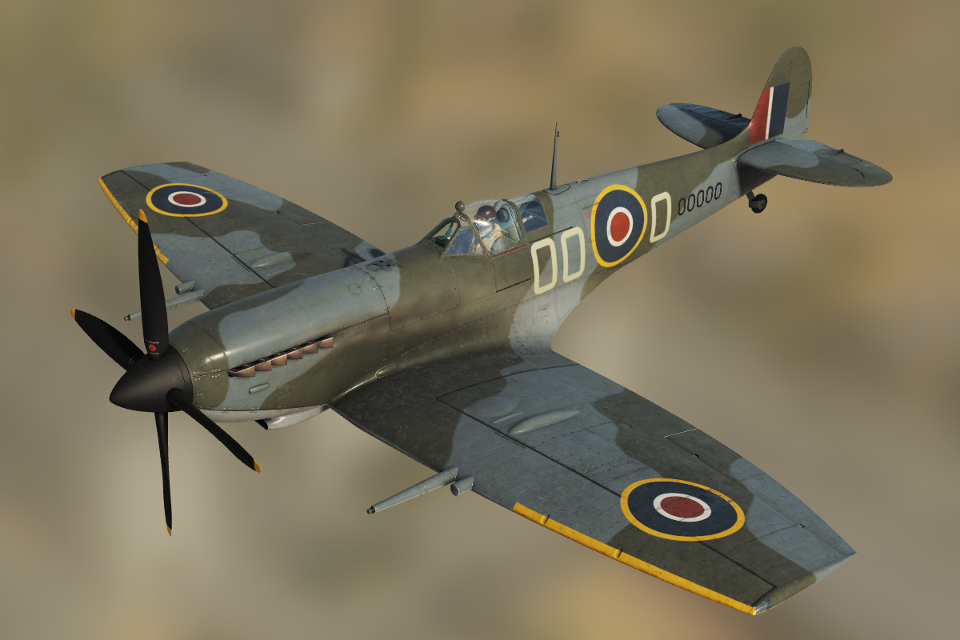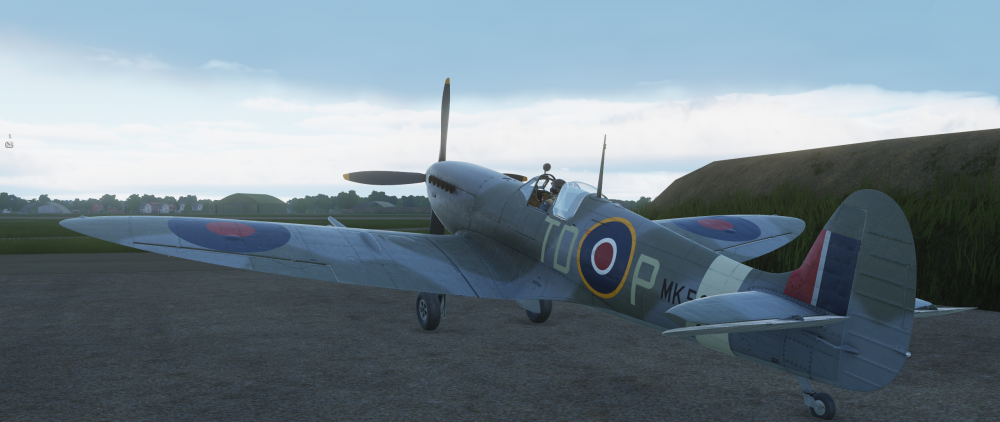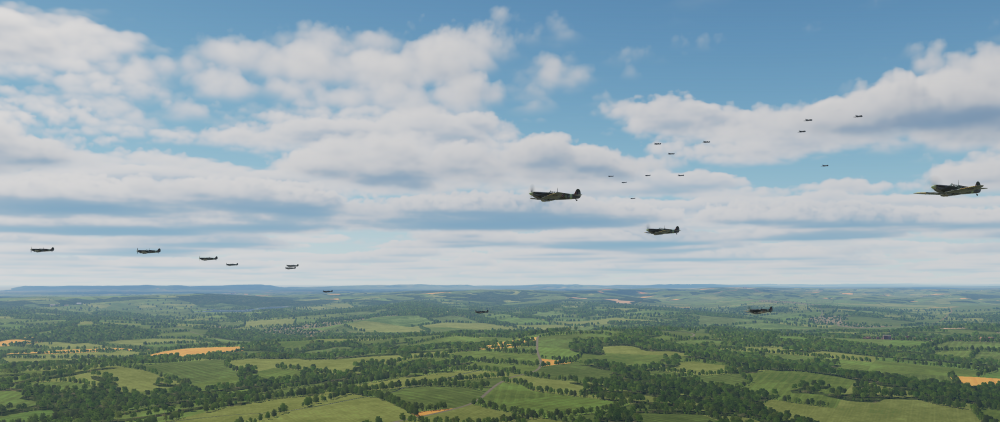Content Type
Profiles
Forums
Downloads
Gallery
Events
Articles
Posts posted by DD_Fenrir
-
-
-
Mission Date 18/12/44
402nd FS - Reconnaissance, Bonn
485th FS - Fighter Sweep, Euskirchen-Duren
410th BG - Rail Interdiction, Bonn
Debrief:
370th FG
402nd FS:




485th FS:




410th BG

370th FG
Awards and Promotions:
2nd Lieutenant Matt Mason is awarded the Purple Heart.

-
 1
1
-
-
Hi all,
Just to keep you in the loop, I've decided to announce any updates to PWCG here, so you can see what we're dealing with, if you've noticed any issues prior to this where they maybe getting fixed and how changes may affect what we do. We're currently on 12.2.1 so there's a fair few additions since the last update.
Quote12.2.5
Tank and Train Busters: tanks and trains now considered separate victory categories
- Tank and train victories weigh more heavily into medals and promotions
- Tank and train victories have separate counts on the first page of the pilots journal
- Tank and train victories have their own detailed section in the pilots journal
Added columns for tank, train, and ground to chalkboard
Added summary to Squadron Log
- How many pilots lost
- How many air, tank, train, and ground victories
Expanded summary to Pilot Log
- Air and ground victories scored in aircraft type
- Number of Air and Tank victories summarized by vehicle types
Add skin configurations for Spitfire XIV
Added skin pack from 41 Squadron Riksen for Spitfire XIV
- PWCG Skin Pack 16- Available for download on PWCG Site
Fix 41 Squadron withdrawal erroneous date for Spitfire MK XIV
Fix 66 Squadron withdrawal erroneous date for Spitfire MK XIV12.2.4
Added Typhoon
Added Fokker D8
Added 41 Squadron flying Spitfire Mk XIV
Reverted 349 Squadron to Spitfire Mk IX
Changed 193 squadron to Typhoon with a focus on ground attack
Added 15 new vehicles and guns
Made battles context aware to be manned with British or American units
Fixed missing airfield structures
12.2.3
Added squadron level target preferences.
- Allows squadrons to be directed towards specific target types
- Target preference for P-47 units some is trains
- Added shipping target preference to 45th Bomber regiment (A20)
Made several P-47 squadrons prefer ground attack
Moved units closer to the front on Kuban map April 1943
Made Spitfire Mk IV its own archtype to reflect complete replacement.
- Currently flown by 193 and 349 squadron. Others keep the Mk IX
- 349 is acknowledged to be non historical. It kept the IX. I just wanted at least 2 units to fly the XIV.
Fixed many (should be all) instances of duplicated units
- They weren't really duplicates. They were just positioned on top of each other.
Fixed case where battle was not being generated when it was required
Fixed case where Ai scramble missions could have a zero altitude waypoint
12.2.2
Improved performance of the waypoint editor screen
Improved (slightly) performance of the map screens
- Press new button edit waypoint details to edit
Fixed error that cause incorrect intercept waypoint altitudes-
 1
1
-
-
-
Hi all,
Jocko, a chap who has consistently made great Spitfire skins since way back in Il-2: 1946 days, turned his hand to DCS.
I recommend you get them - particularly the generics -because I will be using them a great deal in my missions as, in my opinion, in some regards they're even better than Reflected's:



-
 1
1
-
-
Wrong way round Kira;
Green chevron = too slow either add power, drop the nose slightly or a bit of both.
Yellow donut: at target AoA.
Red chevron = too fast, either reduce power or raise the nose or a bit of both.
But that's only half the story. Being at the right AoA doesn't mean you have the right glideslope. You need to ensure that you're stable "on speed" with your nose pointed ~5 degrees above the horizon; because "on speed" is ~8 degrees AoA this will give you your glideslope of ~3 degrees.
However, even getting these 2 right does not equal a successful trap as you may well be "on speed" and holding the right glideslope but if you don't finish your turn onto the groove at exactly the right distance and altitude from the carrier you will find yourself either too high (and thus overshooting the wires) or too low (and undershooting).
This is where the FLOLS comes in. It will tell you if you're too high low and even give you hints as to if you have your glideslope and trim dialled in correctly. If the yellow light (meatball) is above the green datum lights, then you're high and will have to correct with a brief reduction in RPM. If low you'll need to increase your power temporarily to translate your glideslope up to meet the optimum.
The tricky part here is that a change in throttle has an immediate effect on your AoA; it's easy to make a power correction too large or for too long and overshoot the target glideslope, particularly when cutting power as engine spool up times are longer than spool down and increasing AoA = increased drag. All this means that the aircraft is slower to power out of a "slow" or "low" position than it is to brake from a fast or high.
-
-
Mission Date 17/12/44
402nd FS - Attack Armour Column, Duren
485th FS - Attack Armour Column, Duren
410th BG - Rail Interdiction, Zulpich
Debrief:
370th FG
402nd FS:


485th FS:



410th BG


370th FG
Awards and Promotions:
2nd Lieutenant Thomas Crown is awarded the Bronze Star.

2nd Lieutenant Jean Artage is awarded the Bronze Star.

Personnel:
2nd Lieutenant Matt Mason is posted to the 402nd FS.
410th BG
Awards and Promotions:
Major E. Shoo is awarded the Silver Star.

Personnel:
No changes.
-
Bad news fellow Dogz:
Dear Friends of Flying Legends,
In the light of yesterday's message from our Prime Minister, and the uncertainty surrounding the UK opening fully for business, it is with deep regret and a heavy heart that we must cancel this year's event. We understand the government's careful position but cannot safely stay the course in the light of the potential loss and lack of clarity so close to show time.
We sincerely apologise for the disappointing news but the circumstances are truly out of our control. We will be reimbursing all of you, our faithful friends of Flying Legends who pre-paid for tickets in the coming days.
On a personal note and in the name of the whole team at The Fighter Collection who have worked so hard this past year to prepare the aircraft and the show itself, please know that this decision has not come lightly. We are very sad but pray that next year will be COVID free for all and that Flying Legends 2022 will be a classic.
Thank you for your understanding and for your dedication and support.
Yours sincerely
Nick Grey
Director-
 2
2
-
-
-
An interesting analysis of the level of resolution and the fidelity of the new DM that came to the WW2 aircraft in DCS:
-
 2
2
-
-
Welcome to the Dogz Seagoon, you silly, twisted boy you.
Don't forget to draw yourself a fresh pair of legs (with opposable knees) from the quartermaster and make sure to use a pen in case the nefarious enemy bring an eraser.
Should you ever need to know the time, Jabo has it writted down on a piece of paper.
Looking backwards to flying with you!
-
 2
2
-
-
Mission Date 15/12/44
402nd FS - Attack Armour Column, Julich
485th FS - Transport Interdiction, Duisberg
410th BG - Reconnaissance, Julich
Debrief:
370th FG
402nd FS:

485th FS:



410th BG



370th FG
Awards and Promotions:
2nd Lieutenant Roger Over is awarded the Distinguished Flying Cross.

Personnel:
Captain Les Payne is posted to the 485th FS.
1st Lieutenant Reggie Nailed is posted to the 485th FS.
410th BG
Awards and Promotions:
None.
Personnel:
No changes.
-
 2
2
-
-
Mission Date 13/12/44
402nd FS - Frontline Air Patrol, 's-Hertogenbosch
485th FS - Cover Ground Troops, Oss
410th BG - Rail Strike, Gouda
Debrief:
370th FG
402nd FS:


485th FS:


410th BG


370th FG
Awards and Promotions:
2nd Lieutenant Karl Spartan is awarded the Distinguished Flying Cross.

2nd Lieutenant George Vanderweit is awarded the Bronze Star.

2nd Lieutenant James Hendley is awarded the Bronze Star.

Personnel:
2nd Lieutenant Brem Sprow was transferred from the 485th FS to the 402nd FS.
410th BG
Awards and Promotions:
Captain Harold Powell is awarded the Distinguished Service Cross.
Personnel:
No changes.
-
 1
1
-
-
-
Mission Date 11/12/44
402nd FS - Air Patrol, Jülich
485th FS - Chattanooga, Dusseldorf
410th BG - Strike Armour, Jülich
Debrief:
370th FG
402nd FS:



Group CO's note: Good job smacking down the enemy today, gentlemen. Just what we've come to expect when the 402nd and the Luftwaffe cross paths! Good to see our newest recruit getting his first blood in too, even if he was obliged to take to the silk - we're glad he's safe.
485th FS:


Group CO's note: Another auspicious haul from our premier Ground Attack unit; it would have been a hard push to better your last mission score, but 34 ground kills in a single mission is still the 2nd best tally you've ever had. Sterling work boys, keep it up!
410th BG

370th FG
Awards and Promotions:
None.
Personnel:
No changes.
410th BG
Awards and Promotions:
None.
Personnel:
No changes.
-
 1
1
-
 2
2
-
-
Fairy Muff Chris, glad you had a good day, shame about the traffic. Enjoy your fishy delights!
-
 1
1
-
-
Mission Date 10/12/44
402nd FS - Reconnaisance, Frontlines, Julich
485th FS - Interdict Transportation Facilities, Dusseldorf
410th BG - Strike Rail facilities, Monchengladbach
Debrief:
370th FG
402nd FS:

Group CO's note: A difficult day, undermanned as you were with so many of your aircrew struck down with illness, and the loss on only his first sortie of 2nd Lt. Grabowski. The fact you still managed to get stuck in and score an air kill in what must have been something of a sausage party is a credit to you. Hope you find better luck in the coming missions.
485th FS:


Group CO's note: A simply breath-taking performance 485th - 56 (!) ground kills in a single mission is, I believe a record for not only your squadron but the Group as a whole. Sure, it is dampened by the loss of both 2nd Lts. Starling & Pookie, yet the fact that despite these damaging blows your squadron managed to continue on and rack up such a unprecedented tally of enemy ground targets is a credit to the fortitude of your pilots, the skill and leadership of the squadron and it avenges those fallen resoundingly. Magnificent, boys, truly magnificent.
410th BG



370th FG
Awards and Promotions:
None.
Personnel:
2nd Lieutenant George Vanderweit has been posted to the 402nd Fighter Squadron.
A new pilot has been posted to the 485th Fighter Squadron - we await confirmation of his identity.
A new pilot has been posted to the 485th Fighter Squadron - we await confirmation of his identity.
410th BG
Awards and Promotions:
Major E. Shoo is awarded the Distinguished Flying Cross.

Personnel:
None.
-
 2
2
-
-
-
-
-
-
-
Mission Date 09/12/44
402nd FS - Fighter Sweep, Utrecht
485th FS - Bomber Escort, Gorinchem
410th BG - Attack Infantry, Gorinchem
Debrief:
370th FG
402nd FS: (Courtesy of Capt. Sean O'Sullivan)
QuoteFlying as a four ship, the squadron flew the long way North to the interception area, orbited the patrol point for circa 10 minutes and soon realised that the Luftwaffe were not coming out to play.
With the hunch that this could be a distinct possibility based on previous experiences, the squadron had equipped with 2x 500lb bombs for targets of opportunity. Working as pairs, at first with Red 1 and 2 flying top cover, with 3 and 4 dropping down to attack and then the reverse, all that was encountered amounted to a great deal of flak batteries with the hots for our behinds, protecting remarkably little in the way of juicy targets.With 3 and 4 still up top, Red 1 and 2 were flying low weaving around the trees trying to shake the barrage when leader took a clattering of lead and shrapnel to the right boom of his aircraft damaging engine #2 and causing a fuel leak. Deciding this was all now a trifle on the risky side, it was decided to knock off and head for home. Heading South for the frontline still at low altitude trying to find an opportunity to climb, a column of trucks were spotted approaching a bridge by Red 2 that were flanked by AAA. With a bomb still hanging from his racks, Red 2 decided to drop on his way through. Sadly on the route out, with the AAA now very much awake he was seen to take burst to the back of the head and that was that. RIP 2nd Lt Aaron Massengill. We will certainly miss having the only pilot on strength able to decipher these difficult to pronounce European towns and cities!
Now firmly in friendly territory, Red lead climbed to 20,000ft to give best possible chance of gliding home should fuel starvation occur, though it would turn out that engine number two would give out first. Red 3 and 4 headed home as a pair with only a brief interruption to ID a flight of P-51s and all three remaining 402nd aircraft landed safely at Florennes with five engines between them.
Losing two pilots in successive missions is difficult to take especially when we are already at low strength, but this is war. And war is hell.

485th FS: (Courtesy of Maj. Mick Payne-Less)
Quote485th comprising of a 4 ship and 3 ship flight, (so 9 in all🤔 taking into account multiple personalities), were assigned to escort a Sqn of B25 bombers.
After having taken the trouble to climb to angels 18 for a rendezvous, all we saw of them was a trail of descending smoke in the direction of the rendezvous point from afar.
Shortly after that sighting we were assaulted by what can only be described as “absolute Fokkers”. The chaps were in no mood for fun and games having realised that our bomber boys may well have been similarly assaulted..... so we killed them. Superb wingman antics from Lt David Reginald and 2nd Lt HP Pookie throughout by the way, bloody good show !
No joy finding any bombers at all so ground attack became our focus. We had decided not to escort bombers with bombs so straffing would have to be the delivery system for today.
Funflak had been experiencing technical difficulties from “the get go” as you yanks like to say. He was able to make a forced landing at a forward airfield. BA was placed under Capt Rea’s wing for his first mission, all was well until he fell out from under it on the way home mainly due to technical issues. We are hoping he will be back in the air with us soon.
The ground attack went well, with great team work from pairs yielding a good haul. AAA this time seemed to be on steroids, always picking your approach up early and switching to the next threat readily, not happy with that, not happy at all. The current crop of AAA crews need to be terminated so that they are replaced with reluctant rookies ASAP !
Returned to home base with 5 undamaged P38s with 5 well toned and highly photogenic pilots at the controls........ What !?




410th BG


370th FG
Awards and Promotions:
Major Mick Payne-Less is awarded the Silver Star.

2nd Lieutenant Roger Over is awarded the Bronze Star.

Personnel:
2nd Lieutenant Doug Grabowski has been posted to the 402nd Fighter Squadron.
Rosters:
TBC
410th BG
Awards and Promotions:
2nd Lieutenant David Crosby is awarded the Silver Star.

2nd Lieutenant Major Major is awarded the Silver Star.

Major E. Shoo is awarded the Bronze Star.

Personnel:
No changes.
Roster:
TBC
-
 1
1
-
 3
3
-










Appetite For A Combined Tank And Air Mission As A Special Sunday Event?
in IL-2 Sturmovik: Great Battles Series
Posted
I'd prefer peer adversaries; if it's Shermans and the Western Front Rhineland map then I suggest go reasonably authentic:
If it's Autumn/Winter 1944 then: Spitfire IX and XIV, Tiffie, Tempest, P-51, P-38 and P-47D (no 150 octane) vs Fw 190A-6/A-8/D-9, Bf 109G-6 late/G-14/K-4 and a limited number of Me 262.
If it's Winter/Spring 1945 then: Spitfire IX and XIV, Tiffie, Tempest , P-51, P-38 and P-47D (150 octane for the RAF birds only) vs Fw 190A-8/D-9, Bf 109G-14/K-4 and a limited number of Me 262.